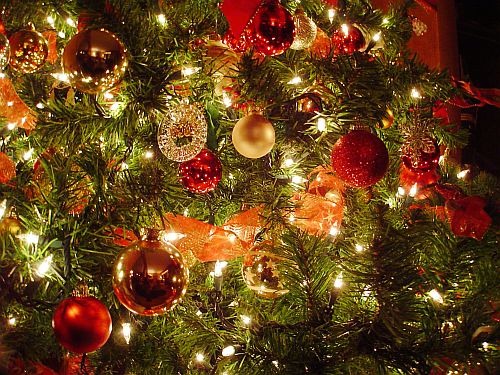The Universe in a Christmas Tree

Joy to the world! The solstice has come, bringing the ancient traditions that celebrate the season. Among those traditions, the ones that involve the Christmas tree are particularly beautiful. The Christmas tree represents a renovated eternal life, with hopes for the future. It also represents the knowledge the ancients had of the very meaning of the solstice: that it may be the longest night of the year, but it’s also the day from which the days will get longer and bring abundance to the world.
The solstice is one of the earliest and most important astronomical discoveries. Since then, we discovered a bit more about the world and the whole Universe.
How about looking at the Christmas tree through the light of this knowledge? Here is some food for thought:
- We know more planets beyond the solar system than there are Christmas balls on your tree. The current count is at 358 exoplanets, and growing;
- If the planet was shrinked to the size of a Christmas ball, it would be the smoothest ball of the tree. The Mount Everest (8 km) or the Marianas Trenchr (11km) are small imperfections relative to the planet’s 12,000 km diameter. It’s an imperfection of less than 0,01%;
- “Earth is not spherical, it’s an oblate spheroid”, some Grinch may say. Indeed, our planet wider in the equator, but even this deviation from a perfect sphere is of less than 0,04%;
- If an 8 centimeters Christmas ball represented Earth and the nearest ball represented the nearest known exoplanet – Epsilon Eridani b, 10.5 light-years away – then the distance between them should be around 630,000 km. Almost twice the actual distance from Earth to the Moon. Epsilon Eridani b is quite far from here
- Now, if the star at the top of the tree represented our Sun, 1,392,000 km in diameter, and the star at the top of your neighbor’s tree – say, 50 meters away – represented the nerest star system, Alpha Centauri at 4 light-years of distance; then the size of our Sun-star to be on the same scale it would have to be 0,74 micrometers large. From 1,4 million kilometers to more than 100 times smaller than the width of a hair, that’s how small the star should be for it to be in the same scale as the distance between it and the neighbor’s Christmas star.
It’s a very big Universe. It’s also a very old one:
- Let’s say your Christmas tree took ten years to grow. If the moment in which it was sprout was the Big Bang – 13,7 billion years ago – and the rest of its history was compressed to present day, then the Christmas tree would have known the first primates only in the last few hours, and all our recorded history would have ocurred in the last minute. Ten years growing from a seed, and all our human adventures would have been instants played in a tiny little part of this huge tree full of balls and stars. The ten year-old Christmas tree can be seen as a version of Sagan’s Cosmic Calendar.
“Astronomy is a humbling and character-building experience”, noted Carl Sagan. “It is sometimes said that scientists are unromantic, that their passion to figure out robs the world of beauty and mystery. But is it not stirring to understand how the world actually works — that white light is made of colors, that color is the way we perceive the wavelengths of light, that transparent air reflects light, that in so doing it discriminates among the waves, and that the sky is blue for the same reason that the sunset is red? It does no harm to the romance of the sunset to know a little bit about it.”
It also should do no harm to the romance of the Christmas tree to know that it’s a conifer, that conifers date from the late Carboniferous, about 300 million years ago, which means that we don’t have to use too much of our imagination to picture a Christmas tree watching the whole of human follies in an instant. In a way they literally did.
Feel dizzy? Perhaps some Christmas Chaos will help you see the infinite that can lie in a Christmas tree.
Science can lead to awe inspiring thoughts, based on the real and awe inspiring observations of the world in which we live. It’s the greatest gift we have, and our greatest hope for the future.
Happy holidays!
by Kentaro Mori, original text at 100nexos
[top image from dyet]







Discussão - 2 comentários
What a wonderful post! Many thanks for it -- and a happy solstice to you and yours!
Many thanks for it -- and a happy solstice to you and yours!